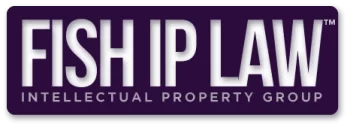A patent gives you the right to stop others from practicing your claimed invention; it doesn’t give you the right to practice the claimed invention. That is entirely counter-intuitive, but that’s the way it works. It is entirely possible for different aspects of a device or method to be claimed by two different companies or inventors, and neither of them can freely practice the invention.
Usually about $10,000 for a formal opinion. But the range can be as low as $5,000 to over $20,000. Informal guidance with respect to a single opposing patent can be as little as a few hundred dollars. It’s usually best to work on the opinion incrementally. Starting with an informal overview of the field may well produce enough adverse information that there is no need to proceed with a formal opinion.
No. There is absolutely no requirement to secure a right to practice opinion, or even a right to practice analysis, prior to filing a patent application. Indeed, because of the high cost of a right to practice opinion, it is relatively rare for an inventor to do so.
No, but it may well be a good idea to at least secure an informal analysis of competing patents. Aside from incurring damages and legal fees, it is very frustrating to spend a year or more developing and getting a product or service on the market, and then have to shut down operations in the face of a competitor’s patent. Depending on market practices, it might also be necessary to buy back infringing product from one’s customers. Note that as a general rule there is no compulsory licensing in the United States. A competitor holding a patent has no obligation whatsoever to license his patent to you.
From search to issuance a U.S. patent typically costs $10,000 – $15,000 or $20,000. Some firms charge upwards of $30,000 to just file a patent, but that doesn’t mean they do a better job. The reason is that such patents very expensive patents tend to focus on length rather than quality. At the other extreme it is terribly difficult to search and write a decent patent for less than about six or seven thousand dollars. Foreign patents typically run about $15,000 – $20,000 to secure, per country, although when filing through one of the regional patent systems, the cost per country can be much, much less. The five regional patent offices are listed below. By far the most-often used regional filing is through the European Patent Organization (EPO).
- African Intellectual Property Organization (OAPI)
- African Regional Intellectual Property Organization (ARIPO)
- Eurasian Patent Organization (EAPO)
- European Patent Organization (EPO)
- Patent Office of the Cooperation Council for the Arab States of the Gulf (GCC Patent office)
Patentability means that your idea meets the criteria for obtaining a patent: it’s new, it’s useful, and it’s not an obvious derivative from something already known. Patentability searches are directed at revealing if an invention meets those requirements. And good patentability searches can also reveal changes to your idea that might make it patentable.
Right to practice means that your product or service does not infringe anyone else’s patent(s). A right to practice search is much more difficult and expensive than a patentability search, because the searcher is never completely confident that all the relevant patents have been considered. The reality is that most people starting to sell a new product or conduct a new service never do a right to practice search.
It’s a common misunderstanding that having a patent confers the right to make the thing patented. A patent confers only a right to exclude others from using whatever is claimed in the patent, not the right to sell or use what is claimed.
